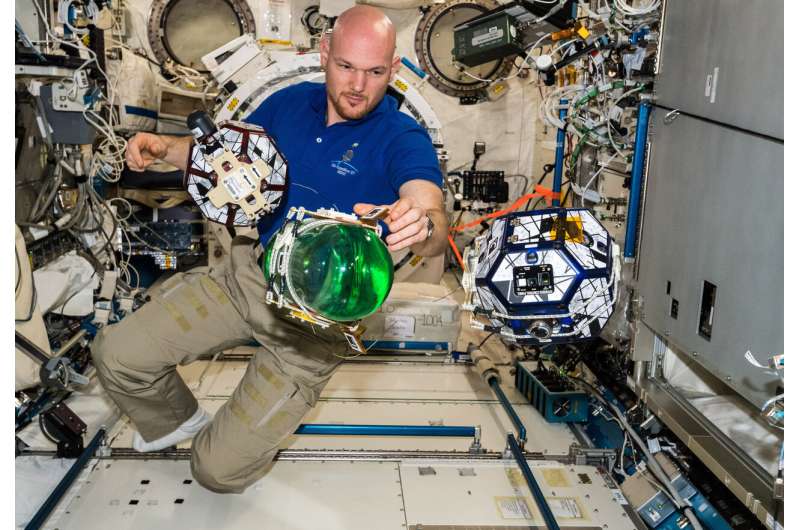Credit: NASA/ESA
ESA astronaut Alexander Gerst during his 2018 stay on the International Space Station, with two floating SPHERES robots tethered to a container of liquid, serving to simulate the experience of pulling a derelict satellite out of orbit.
The sloshing of liquid inside a partially filled fuel tank can alter its trajectory—like throwing a half-filled bottle of water through the air. The Station's freeflying Synchronized Position Hold, Engage, Reorient, Experimental Satellites (SPHERES) were used to test out how sloshing might affect the towing of a partially fuelled satellite out of orbit, as a means of tackling space debris.
The liquid-filled container was tethered between two gas-propelled SPHERES to be pulled in a pre-programmed trajectory. The results have been studied by ArianeGroup in Germany in a recently concluded project, supported through ESA's General Support Technology Program, contributing to detailed software modeling of the container's sloshing motion.
The Tether Slosh project was a collaboration of researchers, scientists, and developers from Airbus Defense and Space/ArianeGroup in Bremen, Germany and Houston; Massachusetts Institute of Technology (MIT), Tencors from Florida, NASA's Ames Research Center in California's Silicon Valley, and NASA's Johnson Space Center in Houston.
ESA, in partnership with the Netherlands, has previously flown an entire satellite to investigate sloshing behavior, which is also important for the flight of launchers and spacecraft: FLEVO-Sloshsat, in 2005.
Provided by European Space Agency























